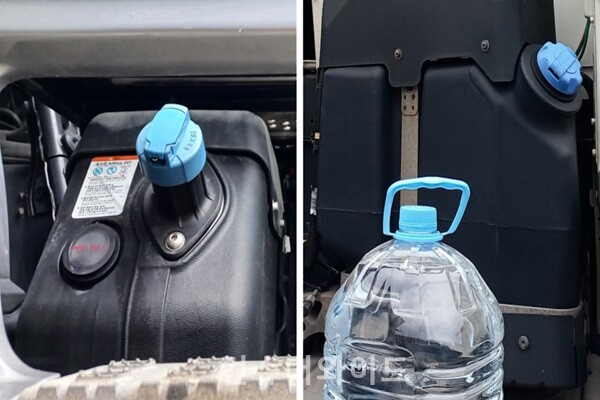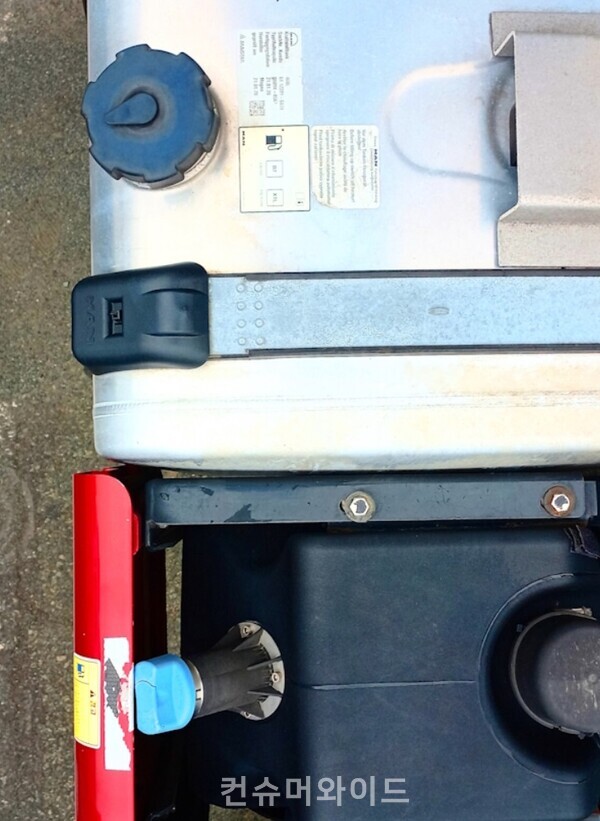
[Consumerwide - Yohan Bok Reporter] Recently, the Korean trucking industry has faced a challenge due to the Chinese AdBlue export limit policy. We have AdBlue stock for six months, but what's going to happen afterwards? (Referring to the data announced by the Ministry of Trade, Industry, and Energy on December 20th, 2023, "There has been an expert conference for securing raw AdBlue and AdBlue products.") (The material has been revised by December 20th.)
The Korean government has been initiating "reducing gas emissions, particularly on old diesel cars," for the last twenty years. As part of the policy, our government's been giving out subsidies for the purchase of diesel cars that meet environmental standards or the installation of DPF. The prerequisite condition for subsidies is early vehicle scrappage.
Heavy and medium-duty trucks under the Level 4 category (Heavy: maximum weight capacity over 15 metric tonnes) (Medium: maximum weight capacity between 3.5 metric tonnes and 15 metric tonnes) are manufactured for 2006-year standards, and Level 5 trucks for standards prior to July 2002. Besides, even if it's produced in the same year, it can be categorised at different levels according to brand models. (Ministry of Environment/Gas Emission Level Assessment Standard)
The early vehicle scrappage subsidies include diesel vehicles with levels 4 and 5, and they do not include vehicles with the default DPF option, regardless of their levels. (Korea Car Environment Association/Conditions for Early Vehicle Scrappage Subsidies)
Concerning the fact that a car lasts over 10 years as long as it's thoroughly managed, early vehicle scrappage subsidies are not for trucks that have no structural or performance issues but simply ones that do not meet environmental standards. Nevertheless, diesel trucks without AdBlue will eventually disappear from Korea in a few years due to environmental policy.
How many diesel trucks are in Korea at the present time? In 2020, new truck registrations counted 3,823 units, and diesel fuel trucks, 3,637 units. (KOSIS car registration status in the fuel category: indicator homepage) Additionally, the entire truck registration count is 3.54 million units in the domestic area. Among them, 93.3% are diesel trucks. (Car 365 complaint citizen's portal) Concerning the commercial truck count of 4.52 million units in 2022, we can estimate the number of diesel trucks today. (Land Transport Statistics homepage/commercial truck status 2022/ Reference data for government policy by utilising the data of beneficiaries of fuel subsidies (commercial trucks))
Some may question why most truckers choose diesel while it's known to be a major cause of environmental damage. Diesel engines are known to have stronger explosion power during engine rotation. Thus, it perfectly works with trucks that require heavy duties. Besides, diesel fuel uses less fuel for the same duty, which reduces fuel costs. (KG Mobility official blog, Allways/Difference between Diesel Engine and Gasoline Engine, August 25th, 2017)
As for environmental causes, experts argue that diesel pollution accounts for 9% of all particle pollution. Furthermore, one of the major causes can be some other reason, such as yellow dust from west winds. (nationalatlas.ngii.go.kr/pages/page_773.php ) Additionally, electric and hydrogen car manufacturing processes also cause microdust and green gas, perhaps not less than diesel cars. Thus, they recommend replacing diesel trucks with advanced diesel trucks that are less harmful while gradually increasing public transportation infrastructure and reducing major causes of air pollution. (The Korean Society of Mechanical Engineers Homepage/Micro Dust Status and Assignment by Park Hyeonwoong and Bae Chungsik, July 2019) (Korean Society of Automotive Engineers/Car trend/major cause of microdust; Diesel car is innocent by Bae Chungsik, May 7th, 2019) Gasoline causes not less pollution but just a different type of pollution. The old type of diesel emits NOX, while gasoline emits CO. (Please refer to the relevant report on September 16, 2020: https://www.consumerwide.com/news/articleView.html?idxno=40818)
For the above reasons (having decent fuel efficiency and the strength to carry heavy duty easily), 93% of all trucks in Korea are diesel-type. And it certainly becomes urgent to secure urea concentrate, which is the key ingredient for AdBlue production, when we suppose trucks will be completely replaced by diesel trucks that require AdBlue in the near future.
According to an expert in the trucking business industry, the importance of AdBlue weighs the same as fuel for heavy-duty trucks that use diesel. Because AdBlue is consumed proportionately to driving distance, when it is fully consumed, it results in engine power loss and malfunction, which can cause fatal engine damage. (A call interview with an expert from Noksan Busan Newport on December 11, 2023)

Then, would it be necessary to manufacture urea concentrate in Korea instead of just relying on imports? With respect to the urea concentrate manufacturing issue, the expert says (quoting the trucking business industry in Newport Busan), "Urea concentrate has got to be manufactured in Korea. The Korean government makes an effort to secure crude oil, which influences the entire industry in Korea. Apart from crude oil, our government also purchases rice from Korean farms, paying more than the market price to sustain rice, which is one of the core productions of national food security.
Diesel trucks that are designed to function with AdBlue won't be able to operate in times of urea concentrate shortages. Soon, this will stop the entire industry in Korea, from the stage of production to sale and delivery. Korea has urea concentrate manufacturing technology, though it has stopped running since 2011. Furthermore, Korea has the advantage of being in a stable relationship with Australia, which produces the ultimate raw material for AdBlue, 'coal'."
(Lotte Fine Chemical closed their urea concentrate manufacturing in 2011 and is currently running Eurox, which imports urea concentrate from China (currently Vietnam since December 6th, 2023), filters, and repackages it. (Korea International Trade Association/The assistant minister of the Ministry of Industry says "Korea is securing AdBlue product for approx. 4 months.."/Dec 10th, 2023)
Large and small businesses in Korea are avoiding urea concentrate production that has almost no profit, while the Korean government is fully relying on importation by improving relationships with urea concentrate manufacturing countries. Referring to the data announced by Statista on August 8th, 2023 (Production of urea worldwide in 2021, by region), the top urea manufacturing regions are East Asia (67.72 million metric tonnes), South Asia (32.31 million metric tonnes), and West Asia (24.15 million metric tonnes).
In the case of Europe, 5.87 million metric tonnes of urea in Eastern Europe, 2.73 million metric tonnes in Central Europe, and 16.56 million metric tonnes in Eastern and Central Europe are produced, which are not much compared to Asia. Some analysts argue that European production and consumption are maintained among nations that heavily rely on diesel cars. The production of urea in Europe is in a downturn as well due to the high rise of raw material costs. Recently, the government and private businesses have been trying to settle the issue through compensated tax cuts and subsidies. For instance, one of the largest urea manufacturers in Germany, SKW, had inquired about lowering taxes to the German government (Federal Ministry for Economic Affairs and Climate Action) during the economic crisis, and the German government has responded that they have been constantly watching out industries that involve gas and will take a further step when it's necessary. Since then, SKW has begun warming up the Piesteritz plant. (Polos Zsofia/Ad Blue shortage or political manoeuvring in Germany?/Sept 14th, 2022/trans.info)
One day, we will be paying double or more for a small amount of urea concentrate that has little economic value today if it is not produced by our hands. Prior to paying something beyond cash, Korean businesses and the government should conduct an in-depth examination.

